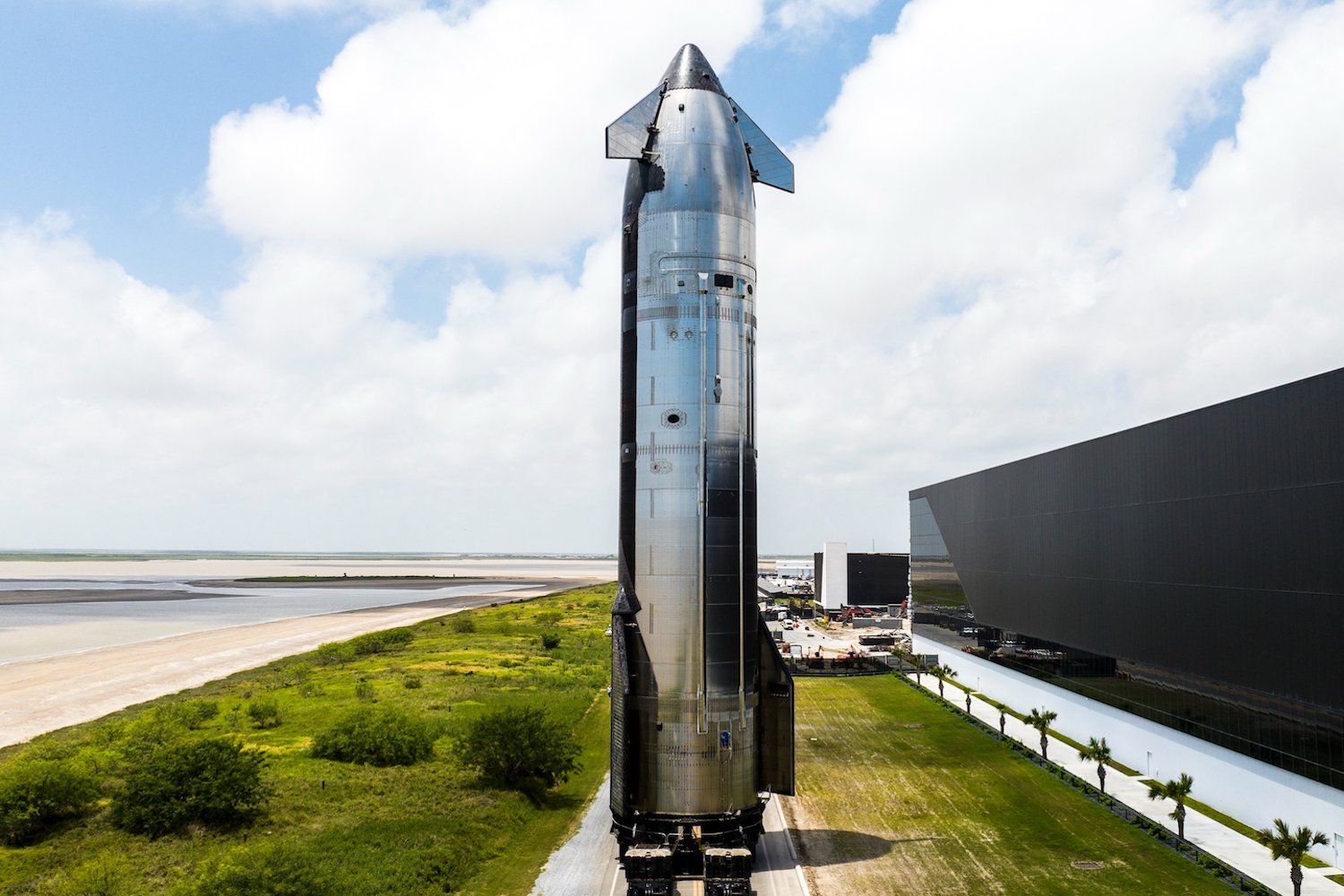SpaceX’s monumental Starship rocket is preparing for its ninth test flight, scheduled for liftoff on Tuesday, May 27, with the launch window opening at 7:30 p.m. ET. Following recent anomalies, the upcoming Starship Flight 9 launch from the Starbase facility in Boca Chica, Texas, is a critical step for the program. SpaceX aims for improved performance after implementing several enhancements since the rocket’s last mission.
The launch will be broadcast live on SpaceX’s website and its X page, with coverage starting 30 minutes before the scheduled liftoff. Viewers may also find alternative streams from space enthusiasts and independent commentators.
Recapping Starship’s Recent Test Flight Hurdles
While SpaceX has demonstrated significant progress with its 232-foot-tall (71-meter) Super Heavy booster, successfully catching it in three out of four recent attempts, the Starship upper stage has faced considerable challenges.
During Flight 7 in January, an engine malfunction on the upper stage led to an early shutdown, causing the vehicle to disintegrate over the Caribbean. A similar fate befell Flight 8 less than two months later, where the upper stage spun uncontrollably shortly after launch before breaking apart. In both instances, the upper stage was intended to achieve a soft splashdown off the coast of Western Australia approximately an hour after launch.
SpaceX’s Corrective Measures and FAA Green Light
These setbacks prompted a thorough safety review by the Federal Aviation Administration (FAA). Last week, the FAA granted SpaceX authorization for the ninth Starship test flight. SpaceX announced in a statement that it had identified the root cause of the previous failures and implemented “several hardware changes.”
The company determined that an engine on the upper stage failed to ignite during the boost-back burn, likely due to overheating of the engine’s ignition device. To address this, SpaceX has added insulation to Starship’s engines, hoping to prevent a recurrence of this issue.
Key Objectives for Starship’s Ninth Flight
A significant milestone for this mission is the reuse of a Super Heavy booster. The booster assigned to Flight 9 previously flew and landed during Starship’s seventh test flight on January 16. Notably, 29 of its 33 Raptor engines have also flown before. This marks the first instance of SpaceX reusing a booster for its Starship rocket, a crucial advancement towards full reusability. The ultimate goal for the fully-reusable launch vehicle involves catching both the Super Heavy booster and the Ship upper stage mid-air using the 400-foot-tall Mechazilla tower.
For Tuesday’s flight, SpaceX stated that the Super Heavy booster “will fly a variety of experiments aimed at generating data to improve performance and reliability on future boosters.” The mission will also re-attempt objectives from previous flights, including payload deployment and “multiple reentry experiments geared towards returning the vehicle to the launch site for catch.”
Starship’s Pivotal Role in Future Space Endeavors
SpaceX’s Starship is integral to NASA’s Artemis program, which plans to return astronauts to the lunar surface by 2027. Beyond lunar missions, SpaceX CEO Elon Musk envisions Starship as the cornerstone of his ambitious plan to land humans on Mars. In anticipation of the launch, Musk is scheduled to host a company talk titled, “The Road to Making Life Multiplanetary,” which will be live-streamed on X at 1 p.m. ET on the launch day.
The Path Forward for Starship
The upcoming ninth test flight of Starship represents a critical juncture for SpaceX. Success would validate the recent hardware modifications and bolster confidence in the rocket’s design and reusability goals. As Starship edges closer to operational status, this mission will be closely watched by the space community and public alike, keen to witness the next chapter in humanity’s quest for multiplanetary exploration. Ensure you tune into the official SpaceX channels for live coverage.











